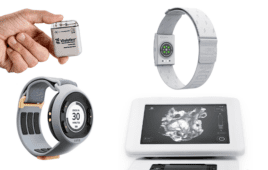What’s the holdup with getting connected medical devices on the market? Here are some potential answers.
Abbas Dhilawala, Galen Data

[Image by managing editor Chris Newmarker]
So what’s the holdup? Some still have reservations and concerns when it comes to connected medical devices. What are the positives and negatives to this future path? Let’s take a look.
Positive: diagnostic improvement
Connected medical devices fall into an umbrella category referred to as the Internet of Medical Things (IoMT). The role of the IoMT is to allow medical devices to be connected to applications and the cloud where information is processed and stored. The applications then use this information to create the user interface. Connected medical devices directly benefit the patient and healthcare provider through the use of improved patient compliance, data collection that can lead to more personalized care, and most importantly the detection of device failures before they become serious.
So how do these seemingly magical devices work? The answer lies in machine learning. Using machine learning techniques to comb through data and identify patterns in a patient’s health over a period of time, medical devices will be propelled into the future. This information helps identify new products and patterns of care. Connected medical devices also help with diagnostic services that may be too complex for a stand-alone medical device. As engineers and researchers collect data, diagnostic algorithms are improved over time, helping to quickly and efficiently provide the best possible care to patients.
Positive: failure prediction
One of the most important features of connected medical devices is that they have the ability to predict potential device failures before they become a life-threatening scenario. For example, if a heart pump manufacturer changed the type of lubricant used in the pump bearings. The product may be the same, but any slight difference can cause an issue. Perhaps the operating temperature was different than the original lubricant, resulting in a higher wear pattern on the bearings, which would normally be undetected until the device failed. However, with a connected medical device, a notification would be issued to the physician and manufacturer, so the pump can be replaced before failing, which saves the patient’s life along with others who’s pump contains the new lubricant.
Along with early diagnosis and predictive abilities, connected medical devices also have the ability to track the effectiveness of patient care. This provides physicians with more comprehensive and frequent information about their patients, along with improved outcomes.
Negative: cost and regulations
While connected medical devices clearly have numerous benefits, including the ability to reduce long-term costs of patient care, the initial cost of developing and maintaining a connected solution is a major concern. Connectivity infrastructure either is the medical device itself, or an extension of the medical device. Either way, all regulatory requirements must be met. Creating products that fall into the connective category and meet all regulatory requirements is a tough process. This is also one that requires an extensive expertise in the space and a highly specific skill set, both of which are hard to come by, making device development and regulation a great expense.
Negative: data privacy and cybersecurity
There are more than 3.7 million medical devices in use. What if all of these devices were connected and someone managed to obtain sensitive medical or financial information from patients by interrupting the connectivity? Cybersecurity and data privacy are two of the largest concerns when considering adoption of connected medical devices. Connected devices are much more vulnerable to brute force, deliberate attacks as well as undirected malware. Cloud-integrated manufacturers are continually trying to prevent this possibility from occuring by listening to the FDA and other regulatory agencies that have issued guidelines on how to mitigate cybersecurity risks. In order to provide manufacturers with incentive to make changes, the FDA allows manufacturers, who have implemented mandated security updates on medical devices, to not repeat the entire regulatory approval process.
Solutions
Can these possibilities be managed and prevented? Absolutely. Thorough risk analysis should be performed to determine risk posed by connectivity threats since each medical device has a unique risk profile.
Considerations:
- What kind of data is stored and transmitted? Does this data include private medical information?
- What is the potential harm if data is erased?
- What are the risks of connecting or not connecting a device?
Potential strategies:
- Choose the right type and level of encryption.
- Create a list of cybersecurity procedures and guidelines
- Use appropriate security controls for access to data
- Train your workforce on good cybersecurity practices
- Ensure good engineering by prioritizing secure design and coding
- Track cybersecurity risks during product development
- Limit the amount of data stored
- Include cybersecurity verification and frequent reviews
- Use the right type and level of encryption
- Establish a post-market surveillance program and conduct assessments
Connected medical devices provide a variety of benefits including automated alerts, remote monitoring, early diagnosis, lowered healthcare costs, and most importantly improved patient outcomes. When properly secured and maintained, these devices can be a very beneficial tool for improving patient health. In most cases, the benefits outweigh the risks.
Abbas Dhilawala is CTO of Galen Data (Houston). Dhilawala has more than 13 years of experience developing enterprise-grade software for the medical device industry.
The opinions expressed in this blog post are the author’s only and do not necessarily reflect those of Medical Design and Outsourcing or its employees.




